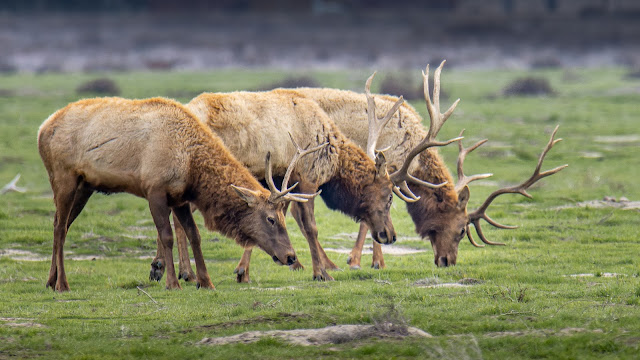Introduction:
What? : Tule Elk State
Reserve protects a herd of tule elk, an excellent off-the-main-road nature rest
area and stopping point on your Highway I-5 drive.
With picnic
tables, restrooms and the potential viewing of the Tule Elks that are in the reserve
this is an excellent place to visit.
Where? : Located only 5
minute drive from the I-5. When driving on highway I-5, take Exit 253 and drive
west (to the opposite side of the gas stations) for 1.5 mile, turn left on Morris
Rd (first left) and drive for another 1.5 mile, the road bend to the right and
become Station Rd, additional short 0.2 miles and you will see the entrance to
the park on your left (you can’t miss it).
This exit is
about 4 hr drive from San Francisco and 2:30 hr drive from LA, 30 min drive west
from Bakersfield.
Google Map Link
When? : Year round, Day
Use Areas only (9:00am to Sunset)
Due note 1: In this exit
you can find 2 gas stations, Tesla charger point, IHOP, Jack In The Box and Tacos
El Monkey and Best Western hotel
Due note 2: Dogs allowed
in the visitor center area. They are not allowed at all at the Auto Safari
activity.
Due note 3: An interpreter
led "Auto Safari", 4th Saturday of the month, Tour starts at 10:00 AM,
Regular day use fees apply ($8.00 per car). For more information call: (661)
764-6881
My thoughts: For the last
few years I was looking for nature spot somewhere between LA and SF along
highway I-5. A place near the highway, preferable with a gas stop, give or take
in the middle of the road.
This reserve is
an excellent location, less than 5 min drive off the highway, not crowded,
picnic table and restrooms, and you have the chance to see the impressive California’s
Tule elk.
I stopped here
several times and I manage to see the elks, sometimes they were far away from
the small picnic area in other visits they were near the visitor center.
The visit:
Tule Elk State
Reserve protects a herd of tule elk, once in danger of extinction.
In the 1800s,
vast herds of tule elk were greatly reduced in number by hunting and loss of
habitat.
Cattleman Henry
Miller (known as the “Cattle King”) began a 50-year effort to save them in
1874. At that time, only few elk remained. In 1932, the herd was given
permanent protection on the park property, now known as Tule Elk State Reserve.
Information about the Elks, taken
from the park brochure (link below):
After the
moose, elk are the second largest members of the deer family in North America.
Three
subspecies of elk still survive in the United States—Roosevelt elk (you can
find them in Redwood NP, see link to my blog), Rocky Mountain elk and Tule elk
(see also my blogs: Point Rays and Pacheco State Park).
Roosevelt elk,
the largest, can weigh up to 1,000 pounds. Rocky Mountain elk are about 85% of
that size; they have grown to become the largest grazing population in the
country.
California’s Tule
elk are about half the size of the Roosevelt elk and lighter in color,
with shorter
coats and larger teeth. Average mature males stand five feet tall at the
shoulder and
weigh 500 pounds. Females are about 2/3 of male size.
Antlers are
growing every year from March to full size around August and they grow up in size
as the male is older.
The elk are
most active from late summer through early autumn.
Visitors are
encouraged to bring binoculars for better viewing.
The Park has
picnic areas (with rooftop protection), restrooms and interpretive exhibits,
enjoy your stay.
www:
https://www.parks.ca.gov/?page_id=584
https://www.parks.ca.gov/pages/584/files/TuleElkSNRWebBrochure2012Rev.pdf
Pictures:




























Comments
Post a Comment